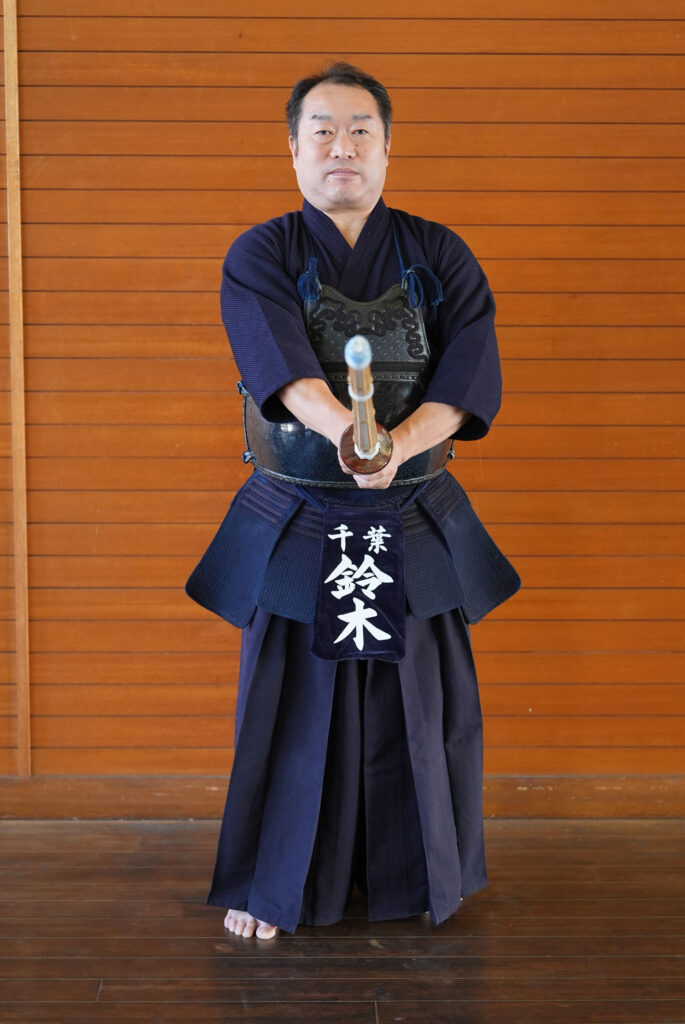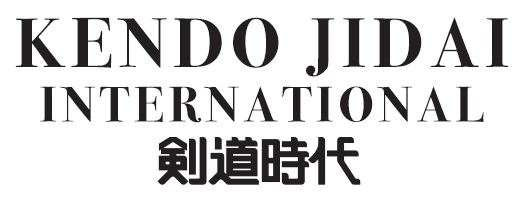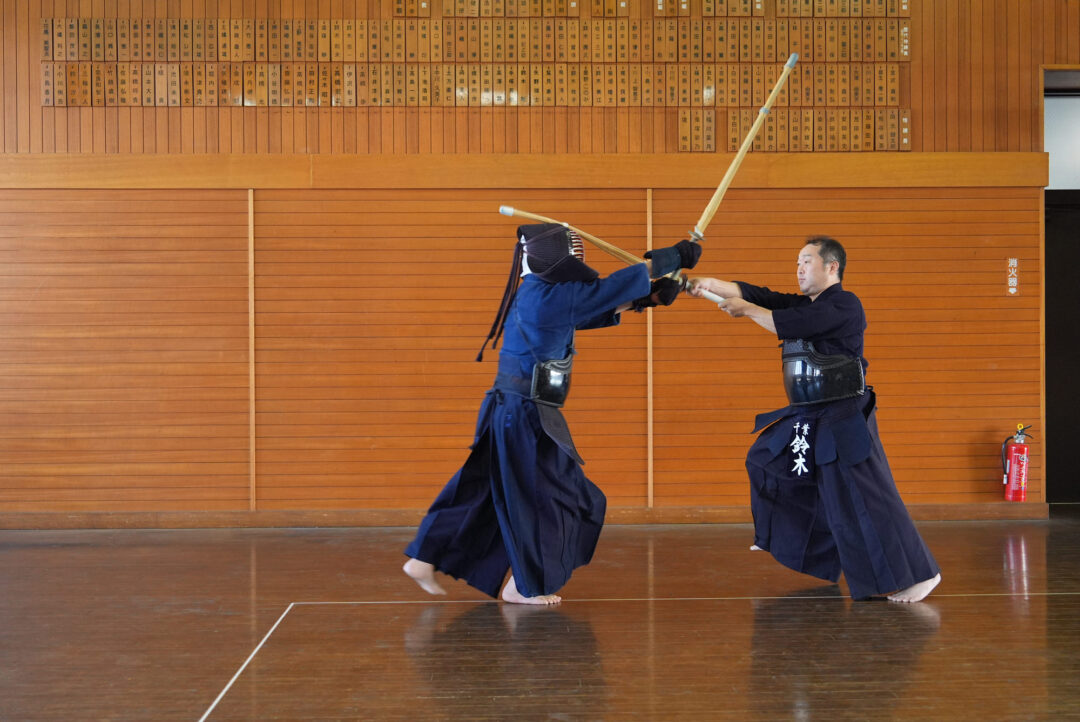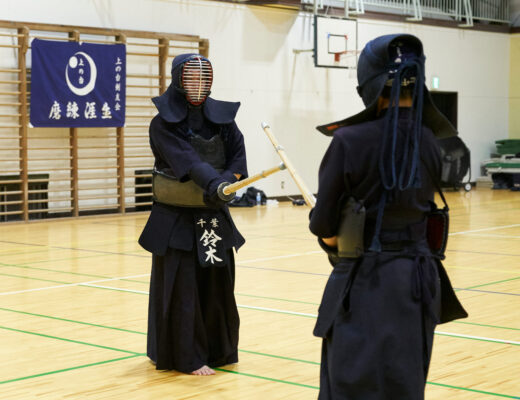2025.10 KENDOJIDAI
Composition: Teraoka Tomoyuki
Photography: Sasai Takamasa
*Unauthorized reproduction or use of any images in this article is strictly prohibited.
At the All Japan Interprefecture KENDO Championship held in April, Suzuki Tsuyoshi Sensei played a pivotal role in leading Team Chiba to victory as the team’s Taisho. “Even as an 8th dan, I am still on the path of training. I try not to be constrained by fixed ideas and aim to keep refining the Kendo I can practice now,” he says with conviction. We spoke with Suzuki Sensei from multiple perspectives about where his Kendo stands today.
Suzuki Tsuyoshi, Kyoshi 8th dan

Understanding Physical Disadvantages and Competing with Strengths
At the All Japan Interprefecture KENDO Championship held in April, I helped Team Chiba win the title as the team’s Taisho. It was my fourth consecutive appearance at this tournament, and in recent years I have felt that my Kendo has gradually begun to change.
I turned 53 this year. It is often said that after the age of 40, both physical strength and muscle power start to decline, and although I continue to train regularly, I can no longer move the way I did in my younger days. However, one of the great things about Kendo is that even when physical decline sets in, it is still possible to compete through the fundamental strength and experience built up over time.
In terms of physique, I am shorter in height and have shorter arms than many of my opponents. If I tried to compete with them purely through speed or power, I would stand no chance. That is why I focus on expanding the range of techniques I can use, and I make a conscious effort to approach matches with this mindset.
It has been about four years since I was promoted to 8th dan, but achieving that rank does not mean I can suddenly perform Kendo like the highly respected Hanshi masters. I believe I am still in the process of growth, and this is a period in which I must continue to make small adjustments to the Kendo I have cultivated so far, aiming step by step for a higher level. To be more specific, I still have the desire to execute techniques from any Maai (distance), and to do so, I believe it is essential to have a wide range of techniques at my disposal.
This is just my personal view, but Kendo has a rich variety of techniques that have been refined over a long tradition. For example, I often use one-handed techniques, and I believe that if such techniques are no longer practiced, they may eventually disappear. If that happens, the very world of Kendo itself would become narrower, and I think that would be a great loss.
Kendo is not only about the clash of two fully prepared states (jitsu). One of its true appeals lies in creating an opening (kyo) by applying pressure, or deliberately presenting kyo yourself to draw the opponent out. These are also vital aspects of offensive and defensive exchange in Kendo, and they show just how profound the art truly is.
Especially for someone like me, who is at a physical disadvantage, it is impossible to strike an opponent without constant ingenuity and creative approaches. Of course, the foundation of Kendo is to gain control of the center, out-pressure the opponent, and strike from that advantage. But as long as my body allows, I want to keep training so that I can deliver a wide variety of attacks and techniques, exploring the full depth that Kendo has to offer.
Learning from Everyone I Cross Swords With
From Elementary School Students to Hanshi Masters
So how do I actually acquire new techniques? One of the most valuable approaches is mitori-geiko, which means learning through observation. Looking back on my childhood, I often imitated the techniques used by the teachers and seniors I admired. That hasn’t changed even now; whenever I see a technique that I feel is good, I immediately devote myself to training so that I can incorporate it into my own Kendo.
And those who offer hints for growth are not limited to higher-ranking teachers or top-level competitors. I serve as an instructor at a junior dojo called Uenodai Kenyu-kai, and even elementary or junior high school students sometimes show techniques that make me think, “Oh, that’s impressive.” In those moments, I make a conscious effort not to look down on them just because they are children. By keeping the mindset of absorbing good points from anyone, regardless of who they are, I believe the opportunities to learn during practice naturally increase.
In terms of learning from the Kendo of others, it is important not only to practice within your own Dojo but also to participate in Degeiko, which means training at other Dojos. Whenever I visit training events with my students, I always make a point of putting on my Men and joining the practice if there is an opportunity for adults to train together.
The value of Degeiko lies not only in being able to cross swords with a wide range of opponents but also in the opportunity to broaden your own perspective. For example, the children I teach may only be able to put into practice about 70% of what I teach them. However, if they can also absorb around 70% of what they learn from another instructor, the combined effect may exceed 100. I hope that one day my students will surpass me, but I believe that would be difficult if they only receive my instruction.
I may sound self-congratulatory, but at Uenodai Kenyu-kai, there are many instructors besides myself. Each has a different style of Kendo, and simply having the chance to train with such a diverse group of teachers is, in itself, a tremendous benefit for those who are learning.
In addition, we now live in a time when we can easily watch the Kendo of top-level competitors on platforms like YouTube. Before the rise of social media, the only way to see such high-level Kendo up close was to become strong enough yourself to compete in the e of them. By learning through a thoughtful combination of real-life practice and video resources, I believe we can create an even steeper growth curve.
Training with Intention and Explaining Techniques Theoretically
From my own experience, one of the most important points in improving one’s ability is to practice with thought and purpose. Looking back, when I was in my early thirties training as a Tokuren with the Chiba Prefectural Police, I once failed the 6th dan examination. At that time, our training schedule as special officers consisted of three sessions a day — morning, late morning, and afternoon. Even with that intense routine, I was unable to pass the exam.
It was during that period that Iwatate Saburo Sensei introduced me to a certain practice group. It was a group for adult practitioners, and training there became a turning point that transformed my entire perspective on Kendo.
What I realized after I started attending that practice group was how seriously each person approached every single training session. The practices in the Kendo Tokuren were extremely intense, with both sides facing each other at their physical and mental limits, so I rarely had the opportunity to reflect on my own Kendo. In contrast, the practitioners at the general practice group had a strong awareness of studying and exploring techniques together. I often brought what I had researched and learned there back to the Kendo Tokuren environment to test and apply it in practice.
At the adult practice group, each participant trained with a clear purpose, and even while crossing swords there was no sense of being rushed. I was able to reflect on myself and think deeply during practice, which led to many new insights. As a result, I passed the 6th dan examination at the next attempt and felt that I had come to understand the true essence of Kendo training. It may well be that this experience was also what enabled me to win the All Japan Kendo Championship later that same year.
After stepping down from the Kendo Tokuren and retiring from active competition, I began walking the path of an instructor, and my training environment changed dramatically. As I mentioned earlier, during my active years I was so focused on enduring the intense training that I had little time to closely examine my own Kendo.
Once I became an instructor, however, I started to analyze my Kendo in much greater detail and approached each practice session with a higher level of awareness. Techniques that I had previously been able to perform without consciously thinking about them, I now sought to explain in a logical and structured way. In order to teach in a manner that is easy for others to understand, I must first have a thorough understanding myself.
For example, even with something as basic as Suburi, I now explain why it is important to raise and lower the shinai quickly. I might say, “If you don’t raise your shinai immediately when your opponent strikes downward, you’ll get hit on the men,” or “If the downward swing after a suriage is too slow, your strike will be blocked.” I try to give such explanations in ways that allow students to clearly visualize real match situations.
*
The other day, a senior high-ranking teacher said something that left a strong impression on me:
“Rather than being told that my Kendo has become appropriate for my age, I would rather be told that my Kendo is still young.”
Hearing these words was a shock to me. It is generally said that as one gets older, Kendo should become more refined and condensed. Of course, there is value in that, but I also feel that such refinement is something that naturally develops over time, not something we should try to force into a fixed form from the present moment.
That is why, as long as my body allows, I want to devote myself fully to elevating my current Kendo to an even higher level, rather than limiting it by age or convention.
Adjusting Kamae to Suit One’s Body Type
The rest of this article is only available for Kendo Jidai International subscribers!



